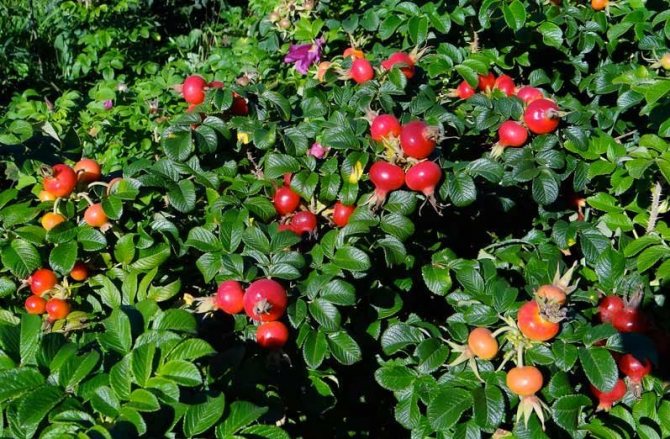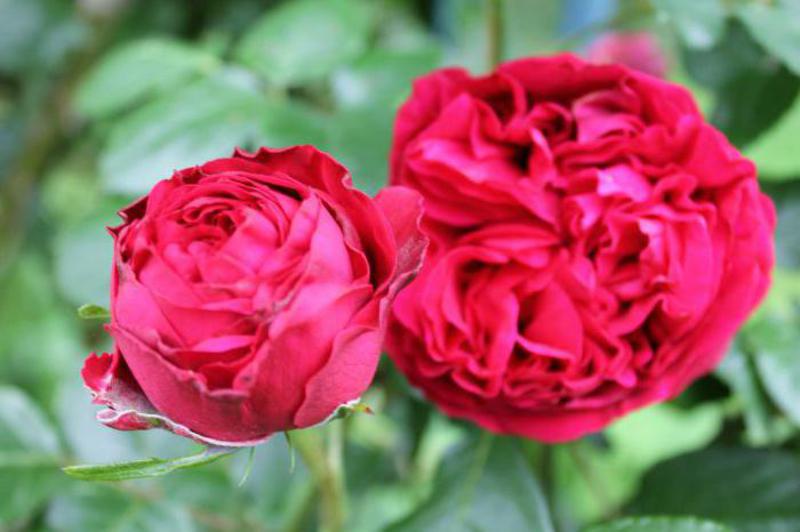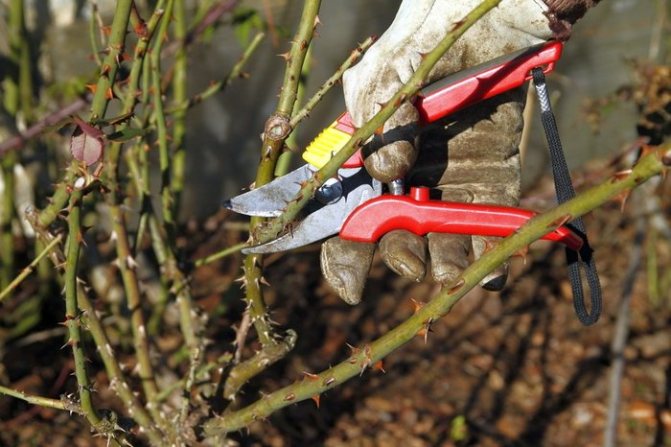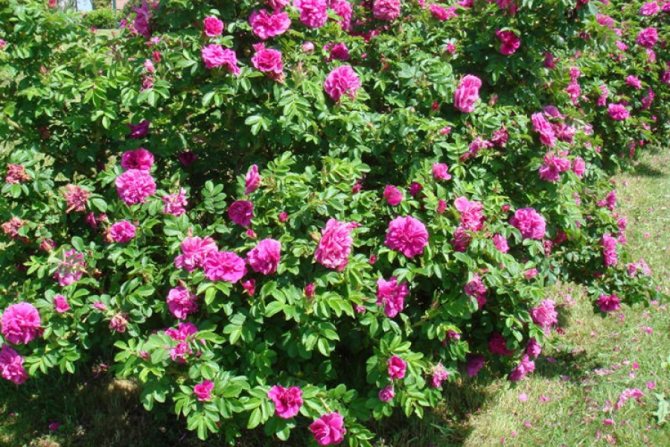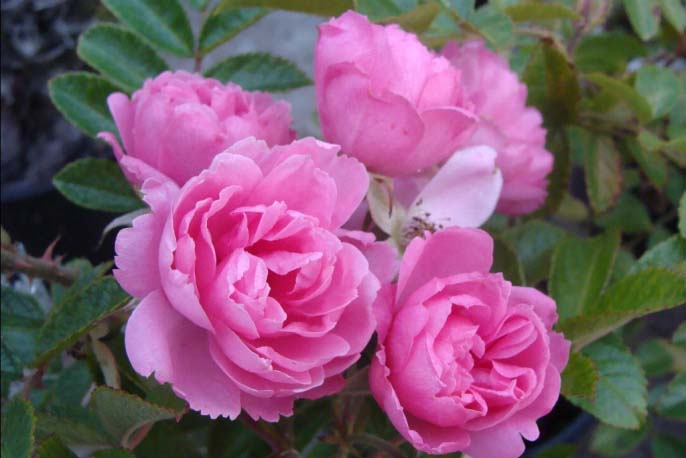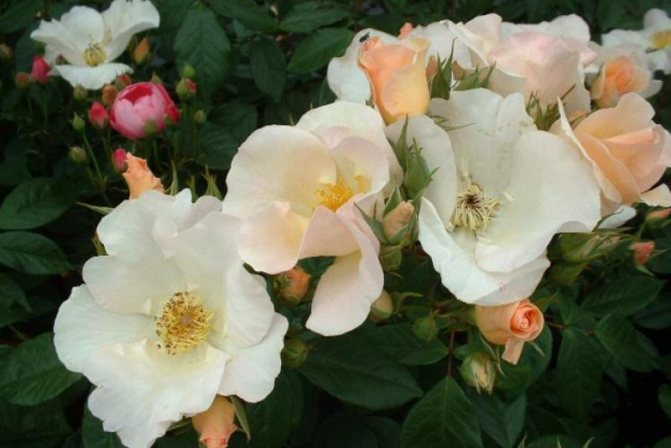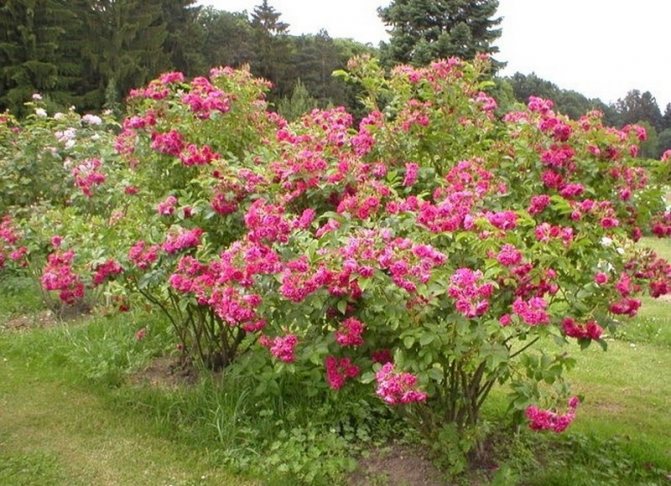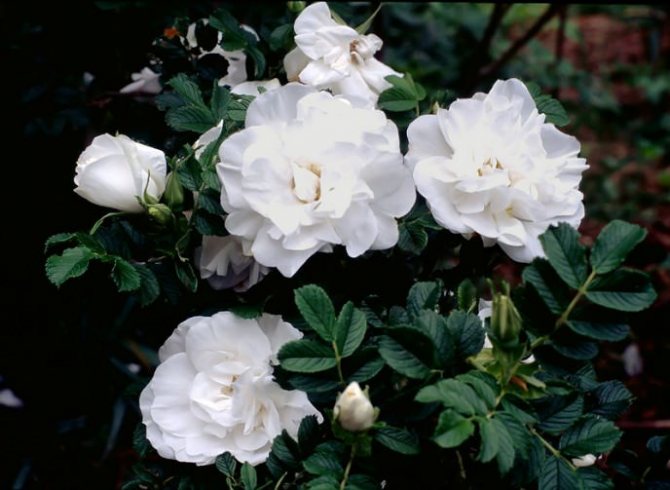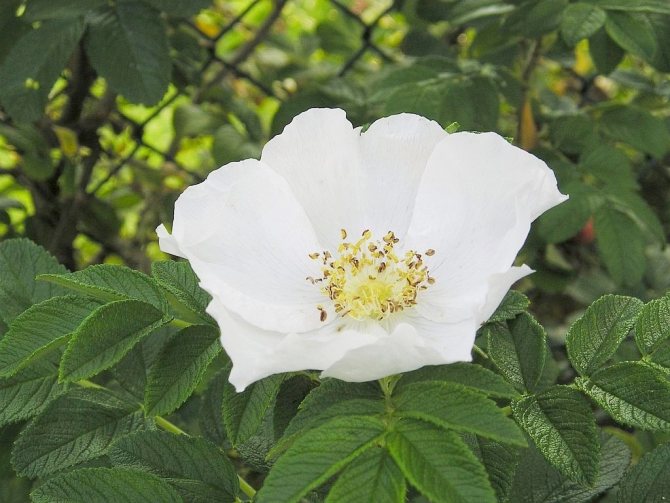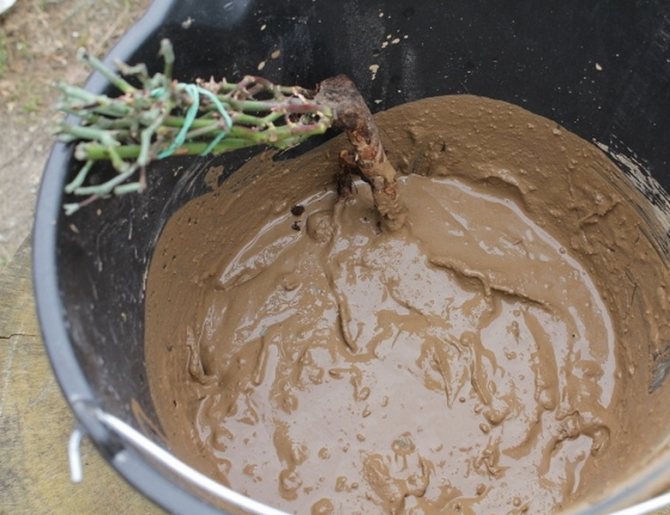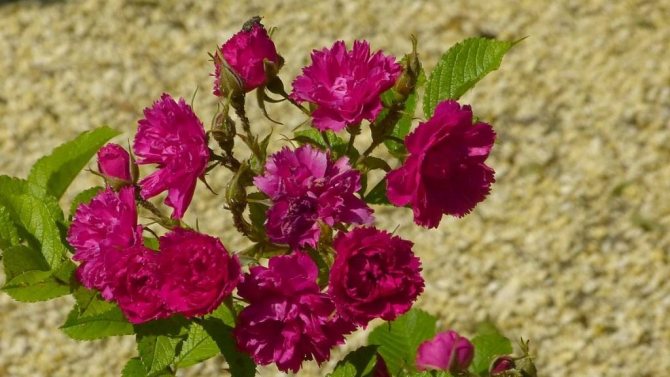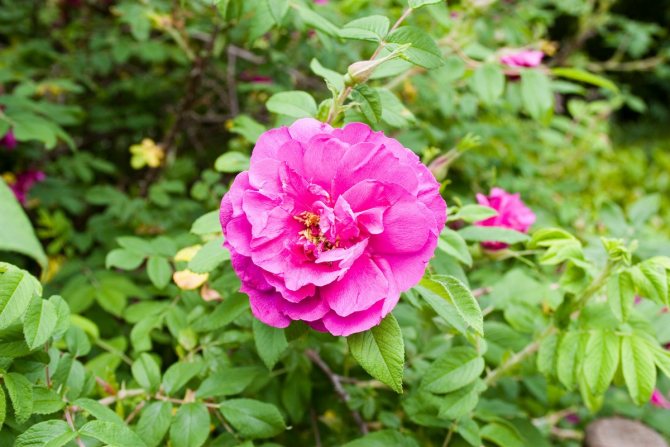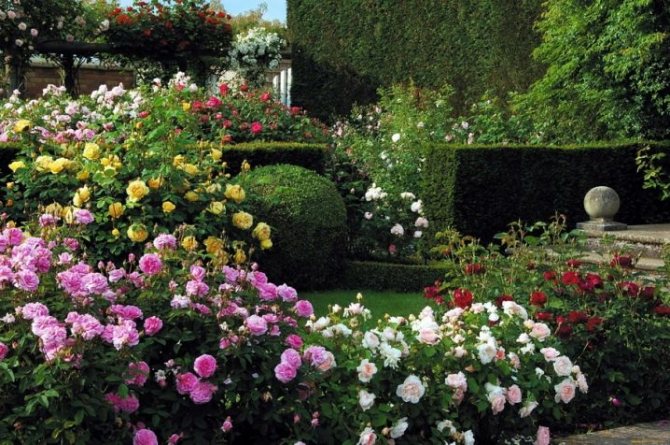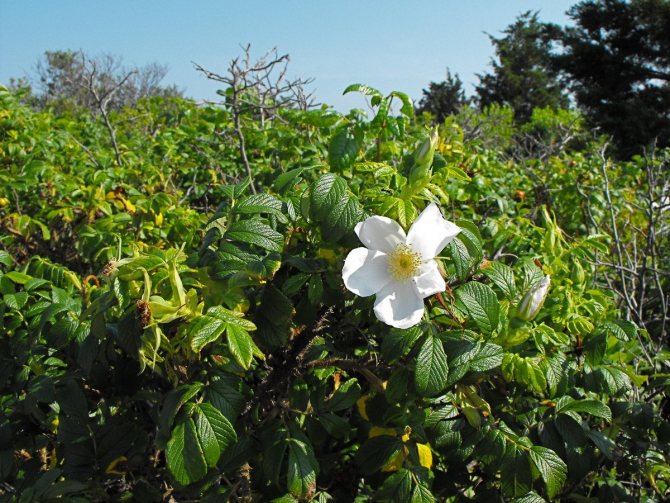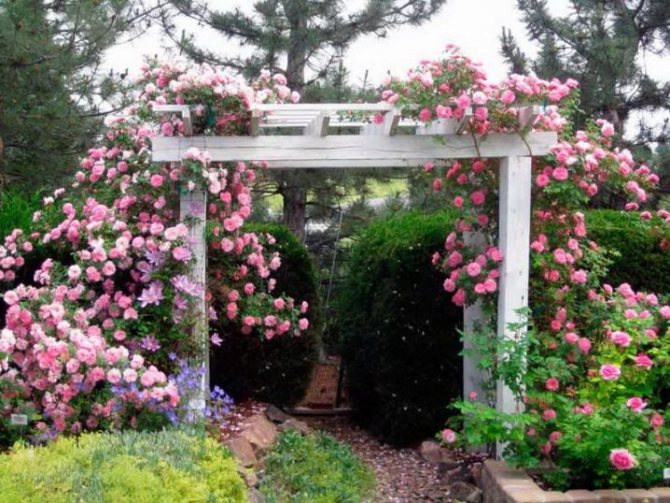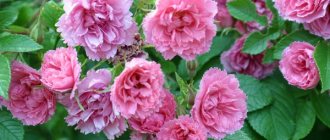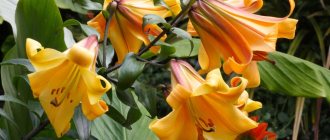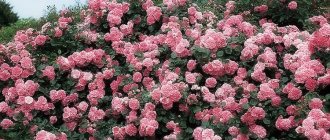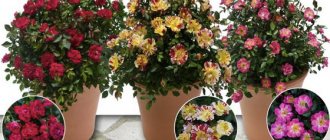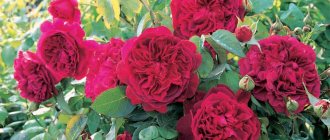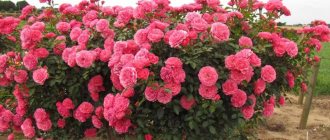The native land of the wild species Rosa rugosa, from which the varieties of the group originated, are North China and Japan. Two forms of roses are known: the first form with white flowers, the second with dark pink or red flowers.
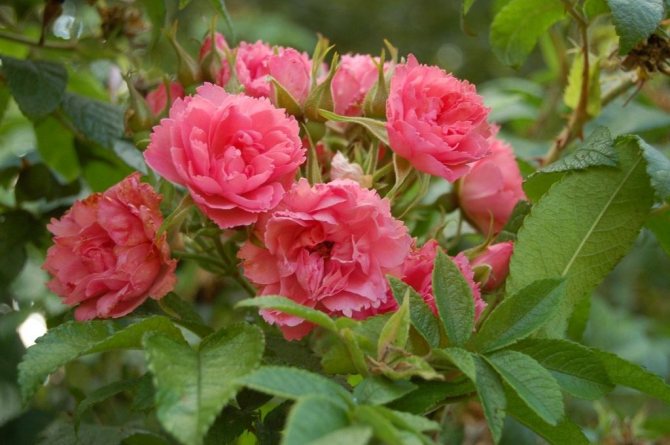
Rose Pink Grootendorst (Pink Grootendors). <>
Among the many elegant rose hips, domestic ornamental gardening in ancient times chose Rosa rugosa, or Rosa rugosa and its hybrids (Hybrid Rugosa group, abbreviated HRg).
It grows in the Far East, Korea and North China. Grows in groups or in thickets on sandy or sandy-pebble sea coasts, in coastal meadows. Photophilous mesophyte, microtherm, edificator of coastal wild rose thickets. Protected in reserves.
Description and features
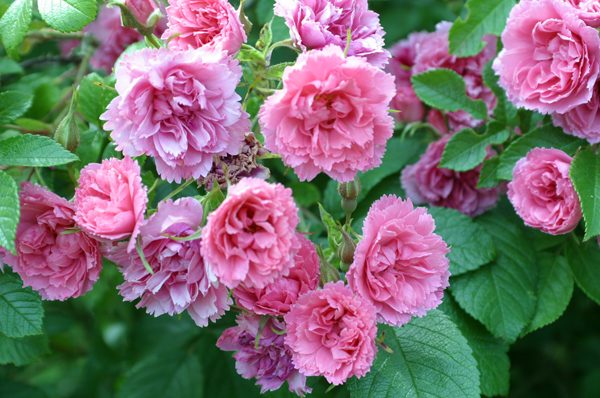

Wrinkled rose bloom - Pink Grothendorst variety.
Inexperienced gardeners believe that the wrinkled rose is an artificially bred hybrid, the appearance of this plant is so unusual. However, this is not quite true. Although today there are hybrid varieties of wrinkled rose hips, real rugoses are a creation of the wild, which people appreciated in ancient times and began to be widely used in the design of gardens and parks.
The wrinkled rose got its name for the leaves - they are folded on the outside and wrapped at the bottom. Even if the rugosa rose does not bloom, it looks very beautiful and original. And when flowers of white or deep pink color appear on this shrub, it is impossible to look away from it.
The wrinkled rose, which is described in detail below, is a shrub that can reach a height of 2-2.5 meters. Rosa loves sunny seaside sandy or sandy-pebble coasts, here the plant feels most comfortable and pleases the eye with lush greenery and abundant flowering.
Rugosa has a well-developed root system, it can spread over several meters in both width and depth. Roots located close to the surface often sprout. And thanks to the roots going deep into the soil, rugosa easily tolerates prolonged drought without regular watering.
The branches and crown of the shrub are spreading, foliage deserves special attention. The leaves have a rich, dark green color, they are naked and wrinkled on the outside, and pubescent below. The leaf can reach a length of 22 centimeters, there are 8-9 leaves on one branch. On the shoots of the rugosa bush, there are thorns of various lengths and thicknesses. The thorns have a reddish tint and are bent downwards.
The flowers of the plant can be from six to twelve centimeters in diameter and have a delicate, pleasant aroma. The hue varies from white to dark red in different varieties. Rugosa rose can have single flowers or inflorescences consisting of 3-8 buds. Flowers can be ordinary or double, in one flower from 5 to 150 petals - you can imagine how charming the bush looks during the flowering period.
The wrinkled rose blooms from late May to early June until the very cold. Flowering can be repeated, so the bush is striking in its appearance: at the same time there can be buds, flowers, and fruits on it. At the same time, both young shoots and last year's ones bloom.


The fruits of the wrinkled rose are used in cooking and folk medicine.
The fruits of rugosa are large, fleshy, they reach 2.5-3 centimeters in diameter, and 50-60 in weight, the color of the berries is from rich orange to dark red. During the season, from one bush, you can collect from 2.5 to 3.5 kg of fruits. They are used for the preparation of drinks, desserts and medicines.
Among the people, this plant is very popular and beloved due to its unique appearance. The shrub looks especially unusual in autumn, when on one branch you can observe a luxurious double flower of dark red color and bright orange fruits. Among other things, the wrinkled rose is extremely unpretentious to care for - and this is also a very valuable quality for the gardener.
Abelzieds
The Abelzieds variety grows as a pyramidal shrub, usually up to 2 m in height. Its semi-double flowers are light pink in color and cupped, 5–6 cm in diameter. They can fade to whiteness. Each flower has 14-18 petals. The aroma is delicate but palpable.
The stem can carry up to 40 flowers, which makes the cultivar particularly impressive during flowering. The buds are long and slightly pointed. The variety is frost-resistant, resistant to fungal diseases. An excellent choice for group compositions.
The variety is named for the snow-white or white-pink color of the flowers. This is a noble hybrid originally from Europe - already at the end of the 16th century, Alba often adorned palace parks. Moreover, the "aristocrat" is so hardy that she can survive even in Siberia!


The diameter of the flowers is up to 8 cm, flowering occurs only once a year, in summer. Flowering usually lasts a month. Bushes are upright, up to 2 meters high, strong shoots. In addition to frost resistance, the wrinkled rose of the Alba variety is resistant to diseases and pests. Does not bear fruit.
Hansa is one of the most popular varieties. The double flowers have a lilac hue, and the golden stamens in the center create a particularly attractive contrast. Elongated buds. The leaves are wrinkled. The brushes are relatively small, up to 5 flowers. On average, the bush grows up to 2 meters (width - 1.5 m) and if it is not cut off, it will form like a tree with an umbrella-shaped crown.
At the same time, Hansa is great for creating a low hedge. It is necessary to ensure that the plant receives light evenly - in a too large bush, the center may dry out due to its lack. Flowering continues all summer until frost. Another advantage is its high resistance to pests and diseases.
Varieties and varieties
Today, the most valuable is the rugoza rose, the varieties of which have the surname Grothendorst in their names. This Dutchman was a famous and talented rose grower more than 100 years ago, and today his business continues.
- F. J. Grothendorst ". To breed this variety, we crossed the rugosa "Rubra" rose and the little-known "Polyanthus rose", and as a result we got a very beautiful shrub blooming with inflorescences of 5 to 20 flowers. The flowers are double, deep red, no more than 4 cm in diameter - they look very much like a carnation. That is why the variety is sometimes also called "Nelkenrose". The plant is quite unpretentious and tolerates wintering well in the middle lane.
- Pink Grothendorst. A variety of the previous variety, it is distinguished by bright pink flowers, the bush has a pyramidal shape, the leaves are glossy, light green. The flowers are small, double, and have up to 40 petals. In terms of winter hardiness, this variety is not inferior to the first.
- Grothendorst Suprem. An exquisite variety of the first grade, it catches the eye with double flowers of noble purple color.
- White Grothendorst. The only variety that has carved white flowers with a very delicate aroma. According to its characteristics, it is not inferior to the previous varieties.
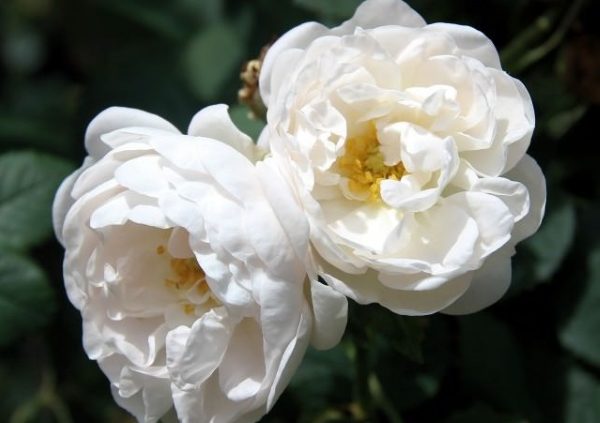

White Grothendorst is a unique wrinkled rose variety.
Some rugose hybrids are very interesting.The most beautiful and popular are Abelzieds, Agnes, Georges Ken, Konrad Ferdinand Meyer, Queen of the North, Hanza.
Pink Grootendorst
A pink variety of Grootendorst. The bush is pyramidal, spreading, up to 1.5 m in height. The combination of delicate pink flowers and light green leaves looks airy and romantic, and can add a special lightness to the note area.


Flowers are the same shape and size as the main variety. They have 30-40 petals, brushes are formed of different sizes (from 5 to 15 colors). The wrinkled rose of this variety blooms magnificently and perfectly repairs in the autumn. Such a wrinkled rose will look good both individually and in a group. Suitable for creating a hedge.
Growing features
Taking care of a wrinkled rose is really easy. These shrubs are not particularly sensitive to temperature extremes and droughts. But in order to get a beautiful color, it is better to create optimal conditions for the plant.
- The wrinkled rose is very fond of natural sunlight. Therefore, it is better to plant this shrub on the slopes of the south side or on flat areas well protected from the winds.
- For rugoza, a fertile, sufficiently moistened soil is needed, this shrub will be well accepted by regular mineral and organic fertilizers, mulching will be useful.
- Ideally, plant the rose in the spring, before the buds bloom on the seedling, but you can do this in the fall. The distance between the bushes should be at least 1.5 meters.
- If you want to create a hedge, the seedlings are placed at a distance of 0.5-1 m, between the rows, while maintaining a gap of 60-70 cm.The depth of the fossa is 10-15 cm.
- The soil must be fertilized before planting. For one square meter, it is recommended to use from 8 to 10 kg of humus, 10 g of superphosphate, 50 g of potassium salt.
- After planting, the soil must be watered abundantly and mulched.
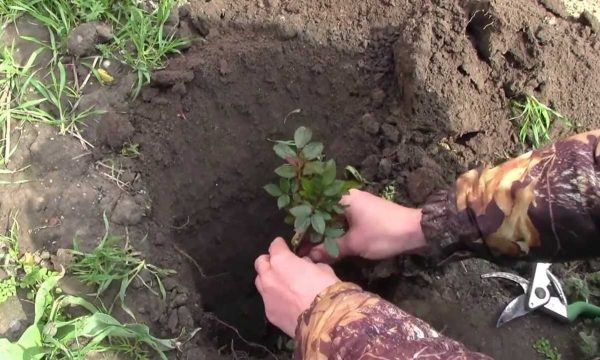

It is better to plant rugoza seedlings in early spring.
The shoots of the rugosa rose must be cut off, leaving no more than one third of the total growth of the seedling. The wrinkled rose looks great both in single planting and in small groups. This plant is ideal for creating an ornamental hedge. In spring and summer, rugoza will delight with luscious greenery and very beautiful, fragrant flowers. And in autumn - purple and crimson foliage, contrasting with orange fruits.
The wrinkled rose fence performs not only decorative functions. It will reliably protect the garden from intruders thanks to its rather long and sharp thorns.
The nuances of care
Wrinkled roses are some of the hardiest, so with minimal maintenance you will have a lush and abundant bush. The place should be sunny, preferably sheltered from the wind. These roses are not very demanding on the soil, to the point that they can survive even a slight salinity, although fertile soil with organic feeding will provide the best result.
Read also: Stefanadra: features of planting, and reproduction, application in landscape design
It is best to plant them in early spring, before the buds begin to bloom, or in the fall. The optimal distance between the bushes is 1.5 m. This distance is reduced to form a hedge: from 1 to 0.5 m, depending on the height of the variety. The recommended hole depth is 20 cm. It is recommended to apply fertilizer during planting. After planting, water the plant abundantly and mulch the soil.
If you do not want the bush to grow too much, its root system can be limited using vertically dug sheets of slate.
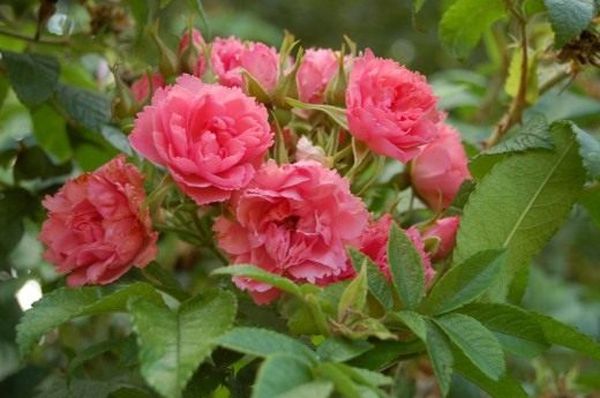

Fertilizer
After planting, fertilization is not necessary for the next two years. In the third year, with the onset of spring, urea must be added to the soil at the rate of no more than 20 g per square meter of soil. When the bush begins to bear fruit, fertilize it like this:
- once every 3-4 years, up to 15 kg of organic fertilizers (humus or peat) are applied per square meter of soil;
- With about the same frequency, mineral fertilizers are applied in the same amount as during planting - 50 g of superphosphate and 20 g of potassium salt per square meter.
In adult plants, the roots can penetrate to a depth of 2.5 meters and grow very wide in breadth. On the one hand, this is good, the plant will easily endure forced drought. But on the other hand, such a bush will bear fruit worse. To prevent this, it is recommended to dig sheet metal or other similar material around the bush.


Rugosa needs to be fed starting from the third year of life.
Crown formation
Pruning a bush is a mandatory and necessary moment in caring for a wrinkled rose. They begin to cut the shrub in the third year after planting. All weak shoots are removed, branches lying on the ground, as well as root suckers that are located near the bush itself. Only five well-developed, strong shoots are left, the branches are cut to a height of 15-18 cm.
Pinching will help stimulate the growth of side branches and fruiting. It is carried out when the shoots reach 70 cm in height. Further, you need to annually cut off those branches that bear little fruit, dry out or get sick. In order for the bush to bloom luxuriantly and bear fruit well, it is important to control the number of branches in it. There should be no more than 20 of them in a plant of 6-7 years old.
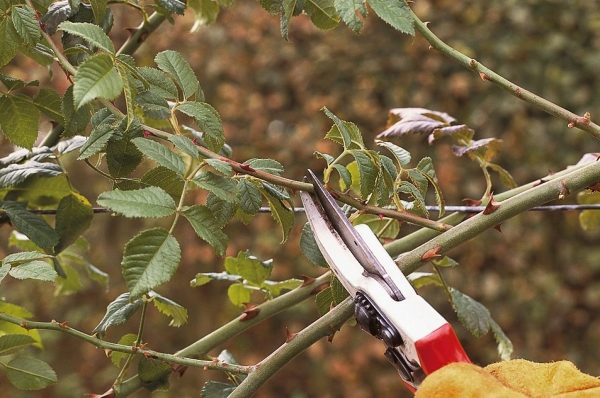

Timely pruning stimulates the growth of young shoots and abundant flowering.
How is rose wrinkled used
The plant is used not only for decorative purposes. It is also grown for flowers and fruits. The petals can be used to make aromatic tea and jam, as well as refreshing eau de toilette for the face.
Compotes are cooked from berries, decoctions and infusions are prepared for the treatment of certain diseases. Like rose hips, rugose contains ascorbic acid, albeit in smaller amounts. Therefore, the fruits are used for the treatment and prevention of vitamin deficiencies, used in dietary therapeutic nutrition.
Any of the varieties of wrinkled roses is worth it to decorate a garden or flower bed near the house. However, you should be careful with people prone to allergic reactions to odors and pollen.
The cost of seedlings depends on the type of plant and the region. For example, in the Moscow region, the price fluctuates around 500-700 rubles apiece. In the southern regions (Rostov Region, Krasnodar Territory), the cost is lower - about 300 rubles.
Pest control
Rose First Lady
If the conditions of care are violated, the rose may undergo the development of diseases and the appearance of insect pests:
- spider mite;
- leaf rollers;
- rust;
- powdery mildew;
- gray rot;
- sawfly;
- brown rot.
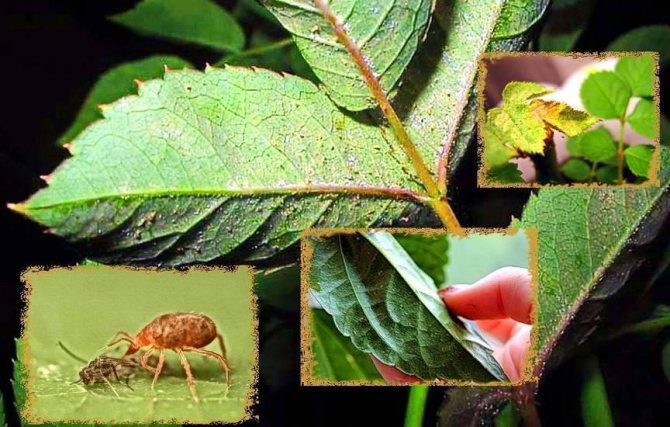

Pest control
Important! An imbalance in the growth of a plant occurs when the temperature indicators are violated, there is not enough moisture or an excessive amount of moisture is observed, there is no fertilizing feeding. Specialized drugs designed to combat pests and treat diseases will help to solve this problem.


